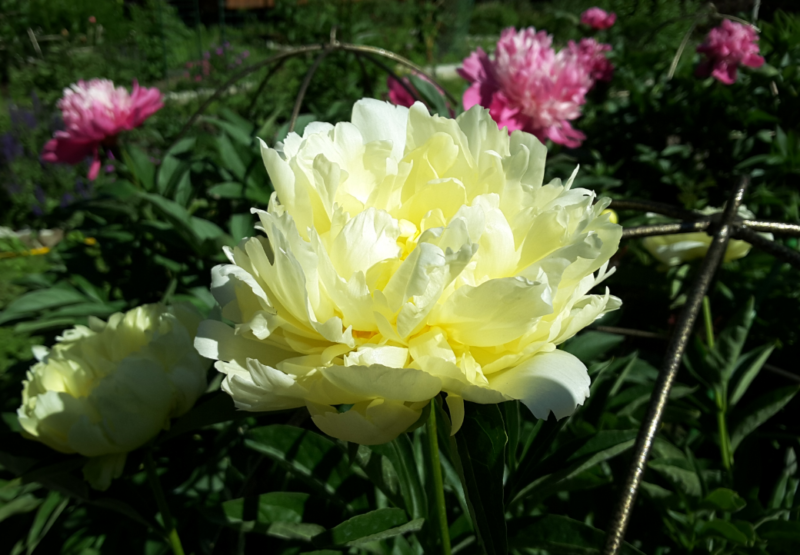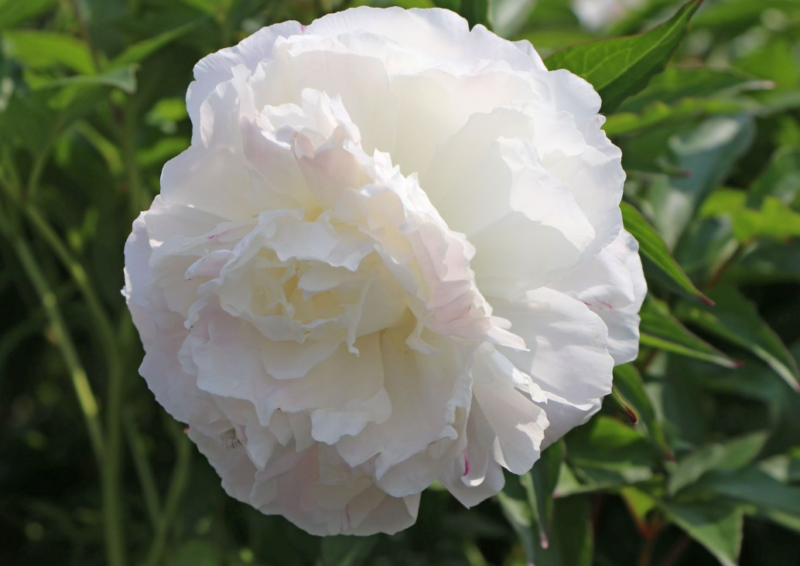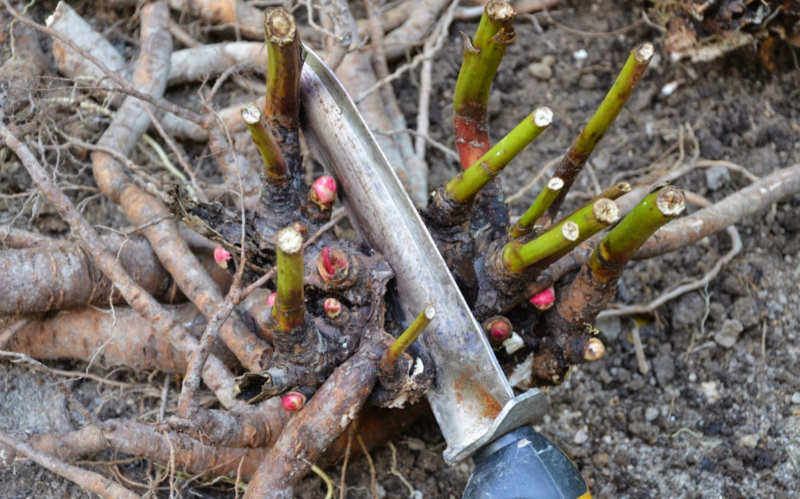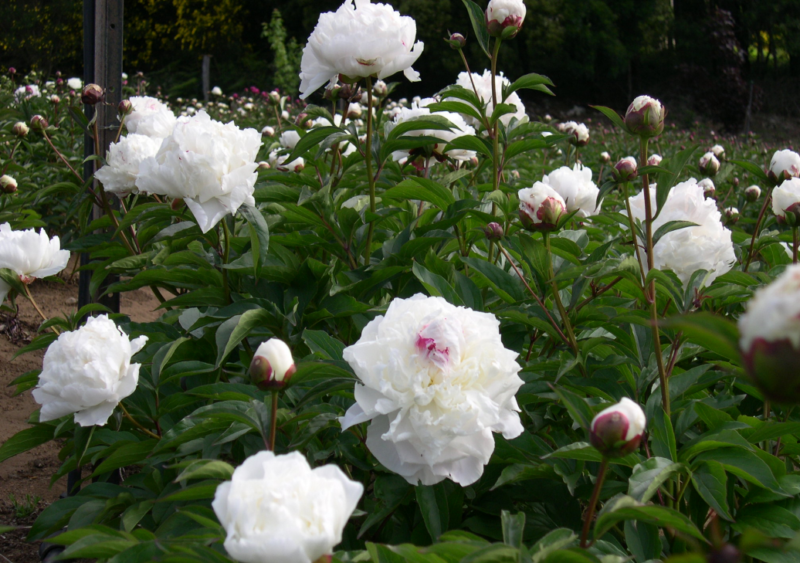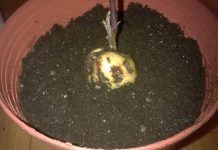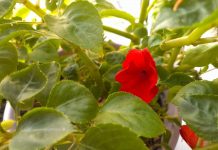When choosing flowers for planting on a personal plot, you should pay attention to the Shirley Temple peony with lush spherical terry inflorescences and a bewitching aroma.
Material Content:
Description of the variety of peony "Shirley Temple"
Shirley Temple has terry inflorescences, reaching 20 cm in diameter under favorable conditions. When blooming, the buds have a pale pink color, and later become snow-white. The variety retains decorativeness even after flowering due to openwork, lush foliage.
Brief description of the variety:
- reaches 90 cm in height,
- blooms in the last decade of May,
- refers to milky-flowered peonies.
The plant is drought-resistant and winter-hardy - tolerates frosts up to -40 degrees.
Blossoming of "Shirley Temple" lasts up to 20 days. In the wild, grows in Transbaikalia and in Siberia. Used for medicinal purposes.
Outdoor landing
Landing is carried out both in the spring and in the autumn months. In southern regions where the spring is short and hot, planting in the fall is preferred. In the middle lane it is recommended to plant peonies in the spring.
The plant prefers open areas, well lit by the sun throughout the day. Peonies also grow in partial shade, but in this case, do not wait for lush flowering. The plant needs good air circulation, so thicken the planting should not be. Undesirable close proximity to large trees and shrubs.
If we talk about preferences for soil, then the grassy peony "Shirley Temple" loves loamy soil, cultivated. Do not plant bushes in areas with a close occurrence of groundwater and with a slightly acidic soil reaction.
If the area is clayey soil, sand should be planted during planting. Clay is added to the sandy soil.Deacidify the soil by adding 300 g of lime.
Landing pits begin to be prepared a month before the planned landing. The hole should be spacious, at least 60 cm wide and 70 cm deep. At 2/3, the planting hole is filled with fertile soil, to which 200 g of superphosphate and 300 g of wood ash are added.
Peony seedlings are lowered into a hole and covered with garden soil, compacted and spilled abundantly. The distance between the bushes is a minimum of 1 meter.
In the first couple of years of life, peonies usually do not bloom. Plants may even look weak. This is a natural phenomenon, as the root system first develops.
How to care for a plant
Bushes should be moderately watered, preventing the soil from drying out. It is especially important not to miss watering in the spring. In autumn, moderate hydration is also necessary, since at this time the buds of the next year are being laid. Approximate consumption - 2 buckets under the bush.
In the first years of life, foliar fertilizing with mineral fertilizers is carried out.
Adult plants are fed under the root three times. In spring, fertilizers are scattered on melting snow, then peonies are fed during budding and a couple of weeks after flowering.
In autumn, the aerial part of the bushes is cut off at ground level. Trimming is carried out only after the first cooling. Shelter for the winter this variety is not required.
Methods of propagation of interspecific hybrid
Peony "Shirley Temple" milk flowering propagates vegetatively and by seed. Breeding varieties with seeds is a rather laborious and lengthy process. It is much easier to propagate the plant by dividing the bush.
Suitable for dividing specimens that have reached the age of four. You can divide the bush in mid-August. In the southern regions, reproduction is recommended in September.
The bush is dug up and removed from the ground, and then divided by a shovel into dividers. Each part should have at least three kidneys. Before planting, the delenki should be disinfected in a weak solution of manganese. After planting, young plants are shed abundantly, and are mulched before winter. The first couple of years from peonies, you need to pick off all the buds so that the plant directs forces to the development of the root system.
Pest and Disease Control
The main enemy of the variety is viruses. In most cases, these diseases fall into the garden along with new plants purchased. But even if healthy bushes were planted, harmful insects - aphids can bring the disease. The most common virus is ring spotting. Due to this disease, annular spots appear on the leaves, forming a marble pattern. Unfortunately, viruses cannot be treated, and diseased specimens will have to be destroyed.
Of the fungal ailments, peonies can be affected by gray rot. Symptoms of the disease: the appearance of brown spots, drying flowers. The disease may develop due to too thick planting. Treatment - spraying with fungicides.
Peonies have not so many pests. Mostly on bushes they feed on bronze beetles and aphids. Beetles are harvested by hand, and Aktara and Kinmiks are used against aphid colonies.
Peonies are ideal perennials for the garden, which do not require painstaking care and constant attention. In response to a little concern, “Shirley Temple” will thank lush flowering.


